Up Next
‘Folklore Is a Way of Understanding’: Tali Lennox’s New Paintings Surrender to Nature
Tali Lennox’s debut solo exhibition "Tremors" is now on view at Nicodim, Los Angeles
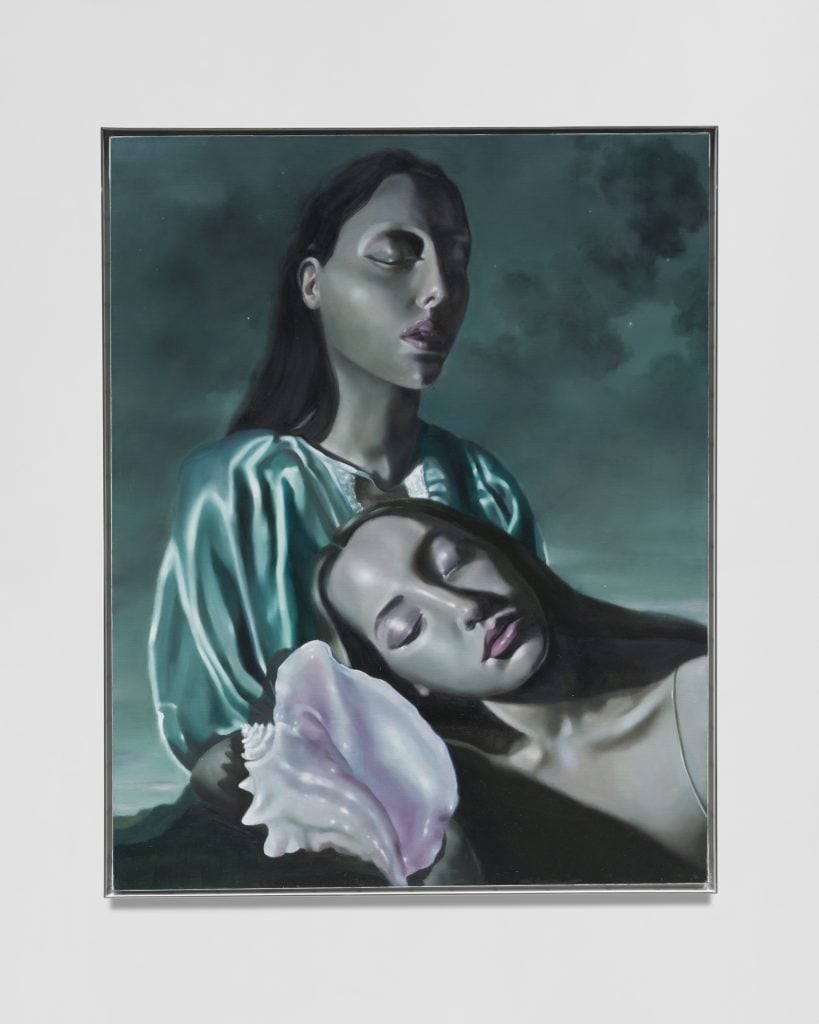
“We always revert to folklore,” said artist Tali Lennox, “Especially, in moments of universal unease, folklore is a way of understanding.”
The London-born, Paris-based artist had recently found renewed interest in Das Wunderzeichenbuch—or The Book of Miracles—an illuminated 16th-century manuscript from Augsburg in Germany, filled with dazzling, kaleidoscopic, apocalyptic imagery drawn from religion, myth, and folklore all at once. The book, Lennox said, had indirectly shaped her most recent series of oil paintings, darkly beautiful imagery of ecological dystopia, in which volcanoes erupt, floods rage, and skies burn amid mysterious ciphers and symbols.
These paintings are now on view in “Tremors”—the artist’s debut solo exhibition with Nicodim in Los Angeles, which opened this week coinciding with Frieze L.A., and runs through April 6, 2024.
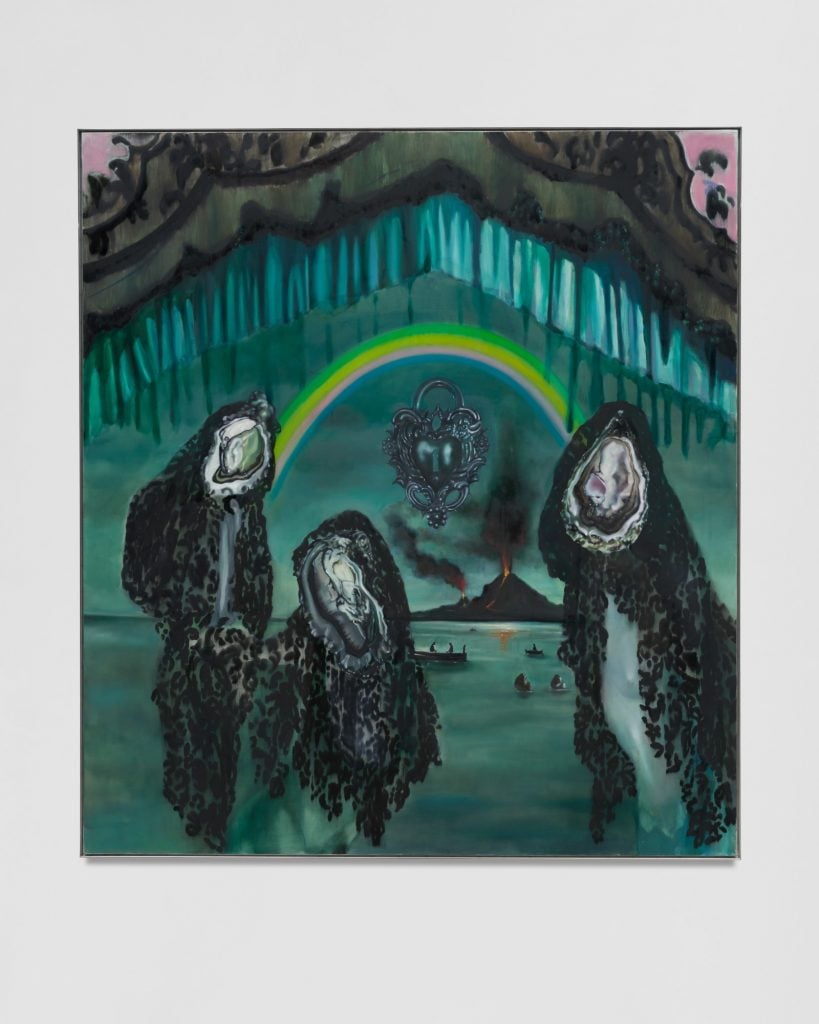
Tali Lennox, Fools Arcadia (2023). Courtesy of the artist and Nicodim Gallery.
“When I’m painting, I find it thrilling to be led by instinct, and trust whatever I am picking up on. The sensitivity tendrils lead the way,” she explained on a call from Los Angeles, shortly before the show’s opening “But looking back over the work, it’s fun to start to make sense of it. A few elements tied together, particularly the Books of Miracles.”
Lennox first encountered the book in a 2021 exhibition at David Zwirner Gallery in New York. “I’d never heard of it before. The pages were so mysterious in an eternal way,” she recalled. The book had lingered in her imagination, then last year, as luck would have it, she came across a secondhand reproduction of the book in a small English bookstore, while visiting her boyfriend, the artist George Rouy.
“The book is centuries old and yet felt oddly relevant. As with a fairytale, it held fear of death alongside wonderment. It encouraged me to broaden my scope and reflect on the universe and the world in a longer continuum,” she said.
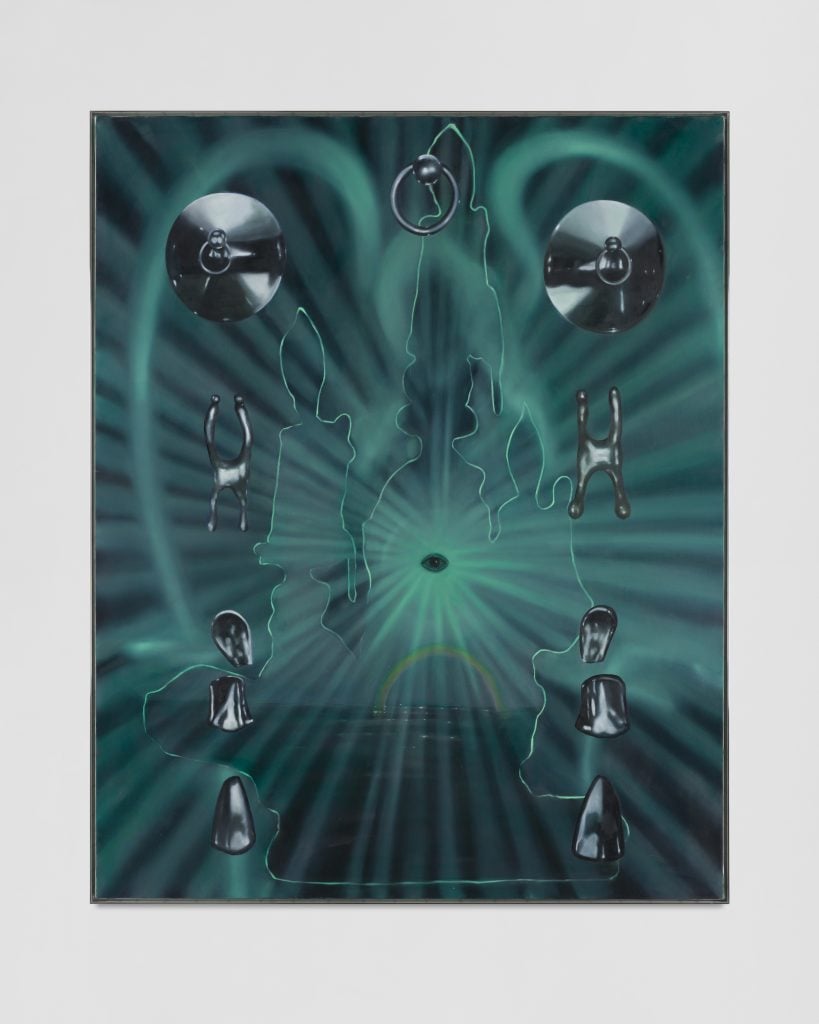
Tali Lennox, Touching the Vessel (2023). Courtesy of the artist and Nicodim Gallery.
Lennox is a self-taught painter (she is also a well-known model) and paints in solitude, metabolizing imagery drawn from history, painting, and nature. “I think of my process as a crest in my mind where visuals drop and form an accumulation,” she said.
Over the past few years, Lennox’s paintings, which blend sensual and nocturnal imagery within mysterious, even surreal landscapes, have been exhibited with galleries including Nicodim, Almine Rech, and Sebastien Bertrand. Later this year, Lennox will release her first art book.
For the past two years, her interests have centered around ancient histories. “My boyfriend and I listen to this show Fall of Ancient Civilizations before we go to bed. Each episode talks about a civilization that fell whether that be from nature or battle, any number of many different elements,” she said, “When you start to think of time, in that wildly grand scope, suddenly, the current state of affairs feels like a minutia.”
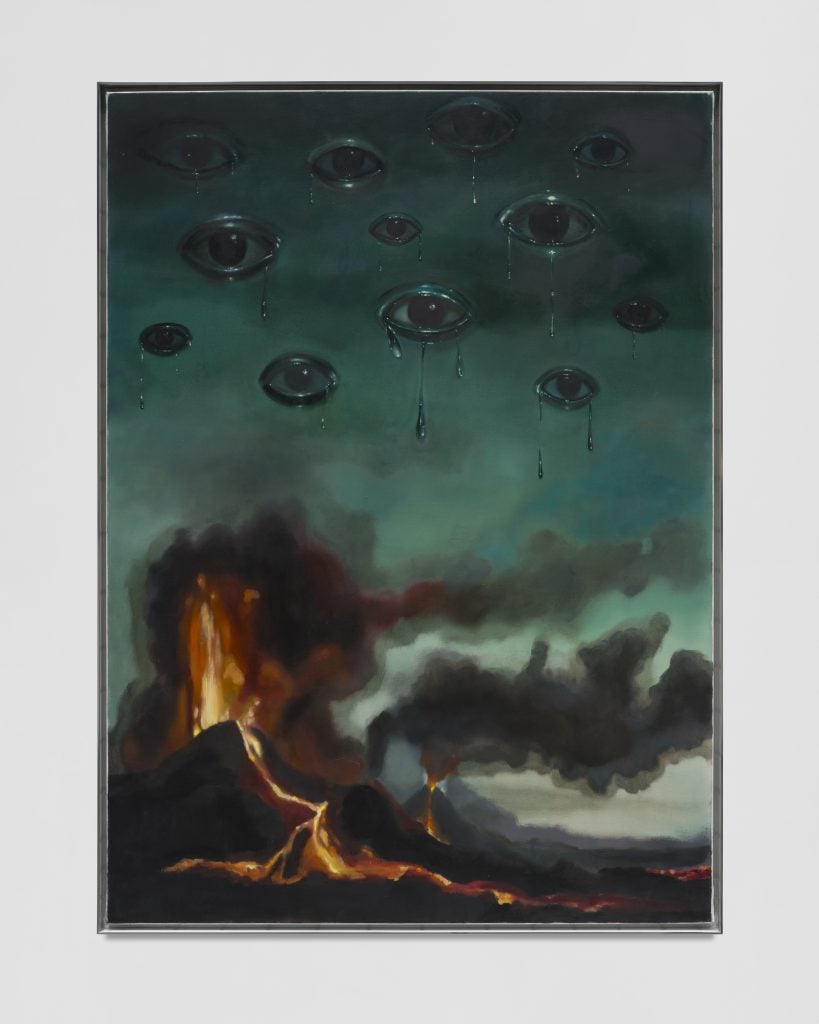
Tali Lennox, Pompei Kiss (2023). Courtesy of the artist and Nicodim Gallery.
In Lennox’s paintings fear and delight live side by side, with dystopic disasters merging with quasi-religious, even erotic imagery. The paintings have a dreamlike, aqueous quality, and are painted in a twilight palette of deep greens, blacks, and silvers, with pops of fleshy pinks and reds.
Here, veiled woman gather as though in ritual mourning—but with the surrealist twist that their faces are now plump oysters. A hovering Madonna weeps glistening tears from a dozen eyes, an apparition over a burning world. Suits of armor and sex toys are rendered with a fairytale wonderment in shining silvers.
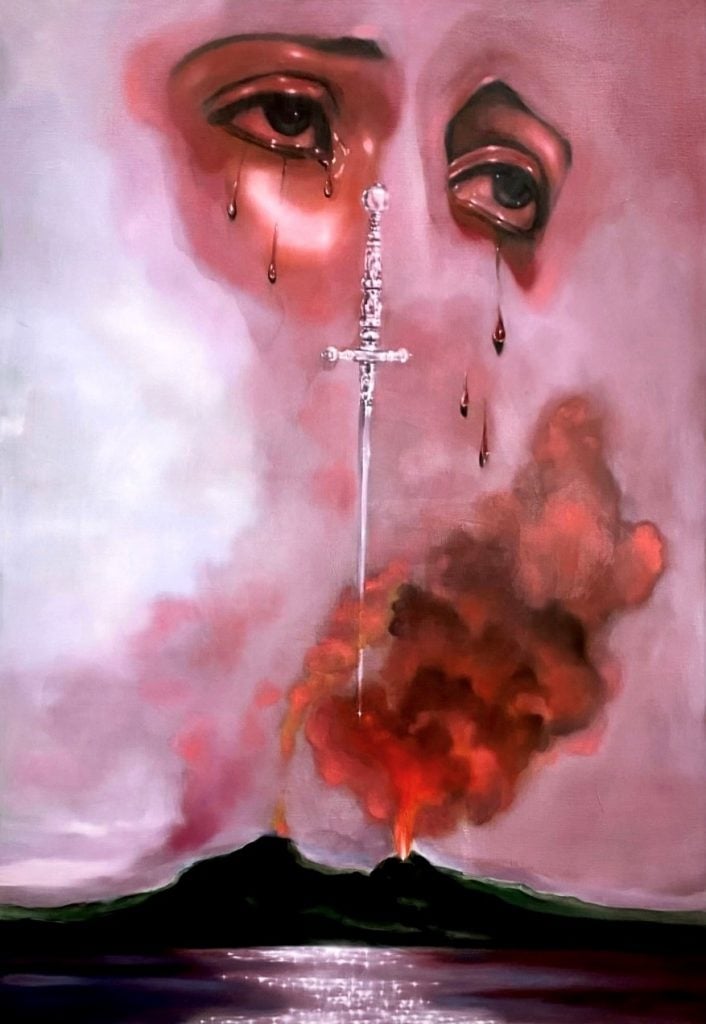
Tali Lennox, Belladonna (2023). Courtesy of the artist and Nicodim Gallery
Lennox builds this kaleidoscopic and panoramic view of history from inspirations culled from her personal life. In the background of several paintings, a volcano erupts with deep red and orange lava. The scenes reference two 18th-century paintings of Mount Vesuvius gifted to her by her mother, the singer Annie Lennox.
“My mom found those paintings ages ago. She loves little treasures and antiques and collecting bits and trinkets. They’re nothing fancy, but quite beautiful. Two paintings have the same view of the volcano in the distance, beginning to smoke, and with the boats in the water and a faint moon,” she said. “One is at twilight and one is at nighttime. I love the symbol of volcanoes because of the eruption and sense of breaking open.”
Lennox parallels the ruptures of the earth, with the breaking open of the female body and mind. “I also reference Anatomical Venuses,” she added “The force of something cracking open—the intensity and ensuring chaos—can also be a release.”
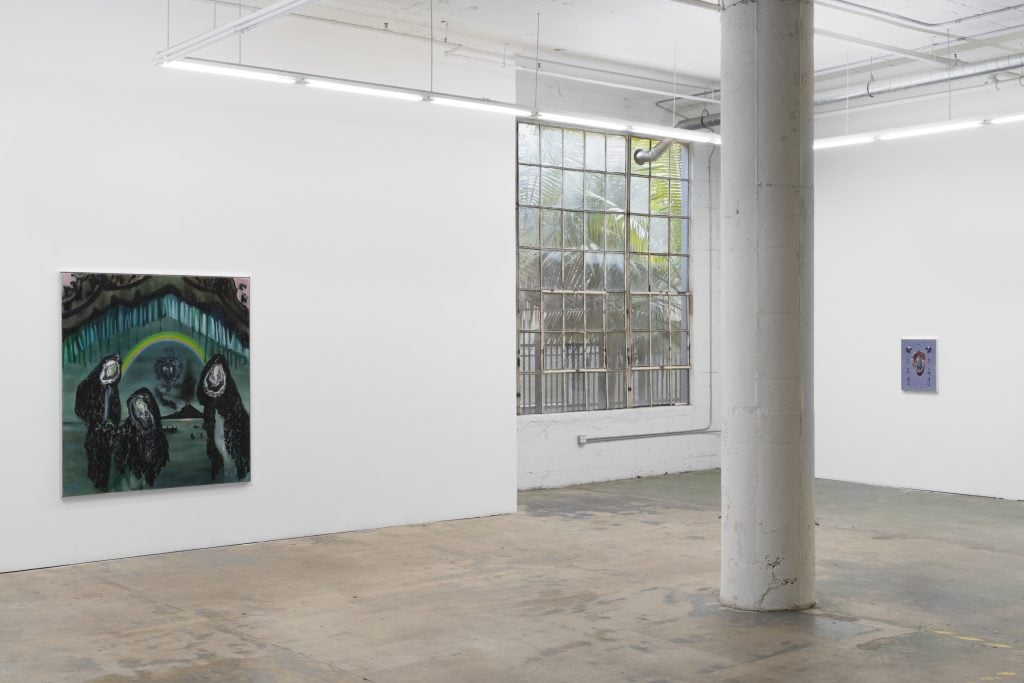
Installation view “Tremors” 2024. Courtesy of Nicodim, Los Angeles.
Crustaceans and shells similarly become symbols of female creative and regenerative powers in these canvases, a reference to Aphrodite, the goddess born from seafoam. Oysters, particularly, appear with frequency, playful allusions to the female sexual anatomy, as well as to mysteries of humanity’s oceanic origins. “Venus emerged from a clamshell. Shells are a symbol of the water that we’re made of and will return to,” she said, “And oysters, well, you know what that’s about! It’s erotic.”
Lennox says her recent fascination with crustaceans emerged from several trips exploring coastal caves. “I had such primal feeling in a cave. It’s almost a distant remembrance, a feeling of returning,” she considered, “My studio is quite tiny and cavelike. I think of the resilience of barnacles or oysters—they’re tiny and old and can resist the forces of waves crashing on them.”
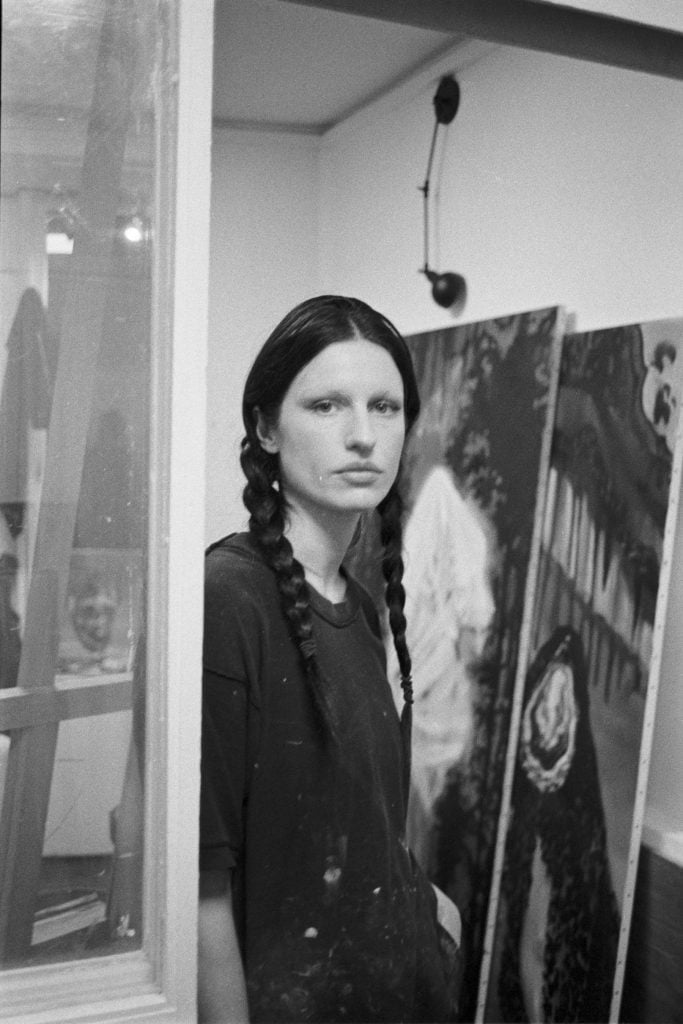
Tali Lennox, 2024. Photograph by Kingsley Ifill.
Lennox’s friend, the Israeli choreographer Sharon Eyal, director of LEV Dance company, is the model for several women figures in the series, including Heart Gush in which a woman holds a butterfly in her mouth. “I saw one of Sharon’s performances and it took me away psychologically. I felt submerged in a cave-like world,” Lennox recalled, “She brings my personal fascinations into the series. Sharon wears her expression on her skin and it’s a painful beauty. Some people are so expressive and so fiercely real and truthful, it can be a bit overwhelming. She personified the notions I wanted to capture in this series.”
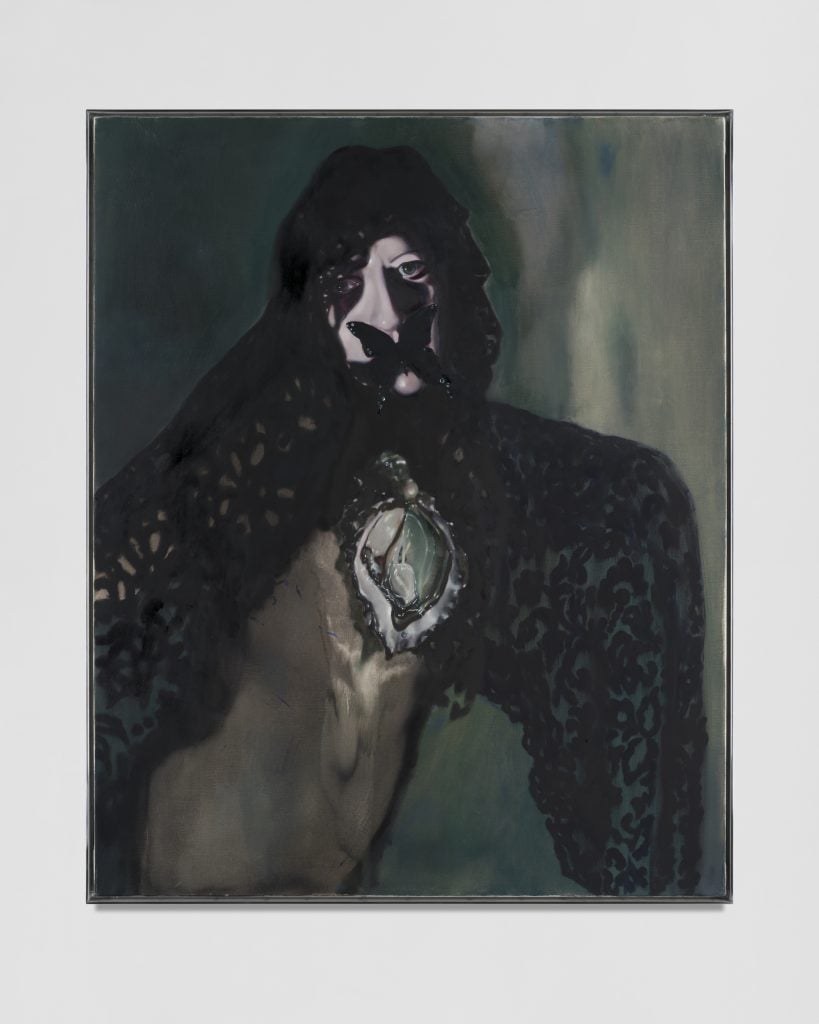
Tali Lennox, Heart Gush (2023). Courtesy of the artist and Nicodim Gallery
Lennox hopes her paintings can seed the possibility of joy without denying fears over our future on this planet. “There is a beauty in the surrender, a humble surrender in facing the power of nature. I hope we can find beauty and poetry in that,” she said, “If the paintings make people uneasy, then perhaps, the painting can gently lift a veil on an unexplored pocket within us and we can find a new place we can approach with a sense of innocent wonderment.”
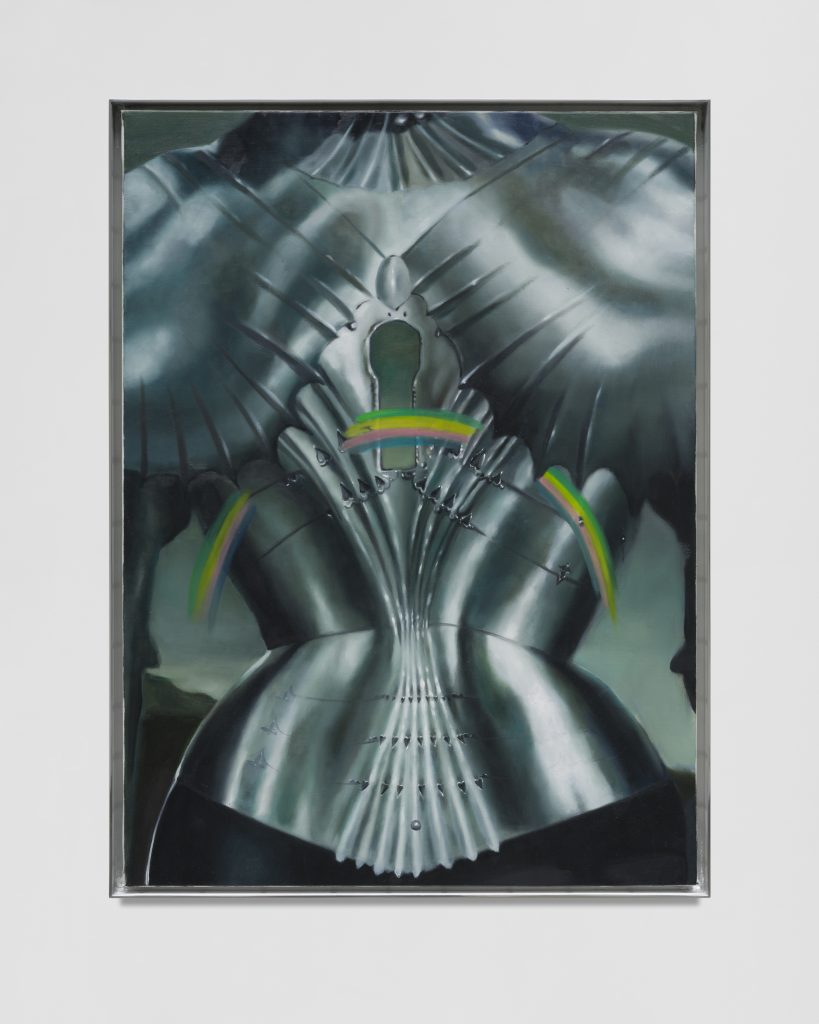
Tali Lennox, Warm Chains (2023). Courtesy of the artist and Nicodim Gallery.





